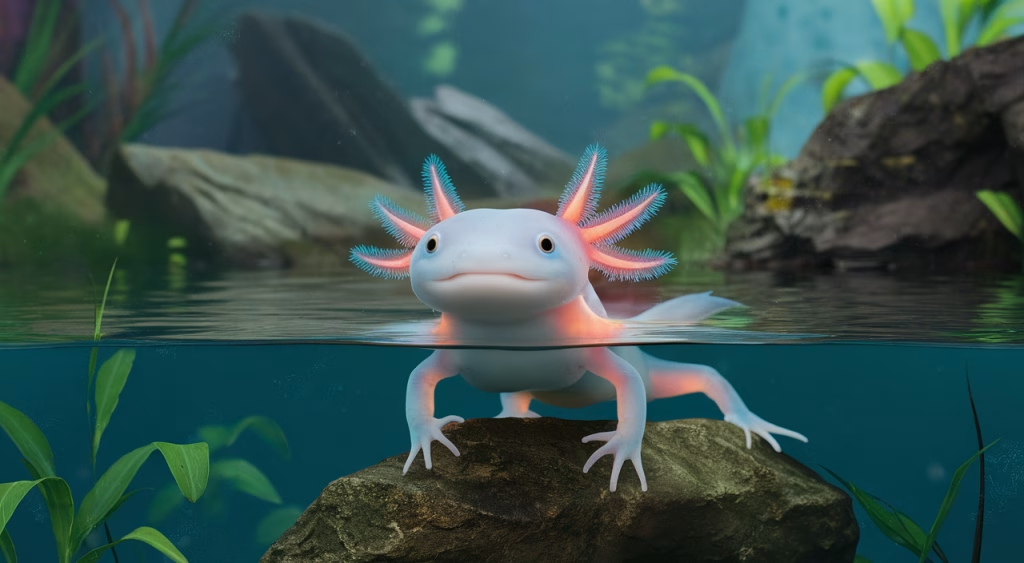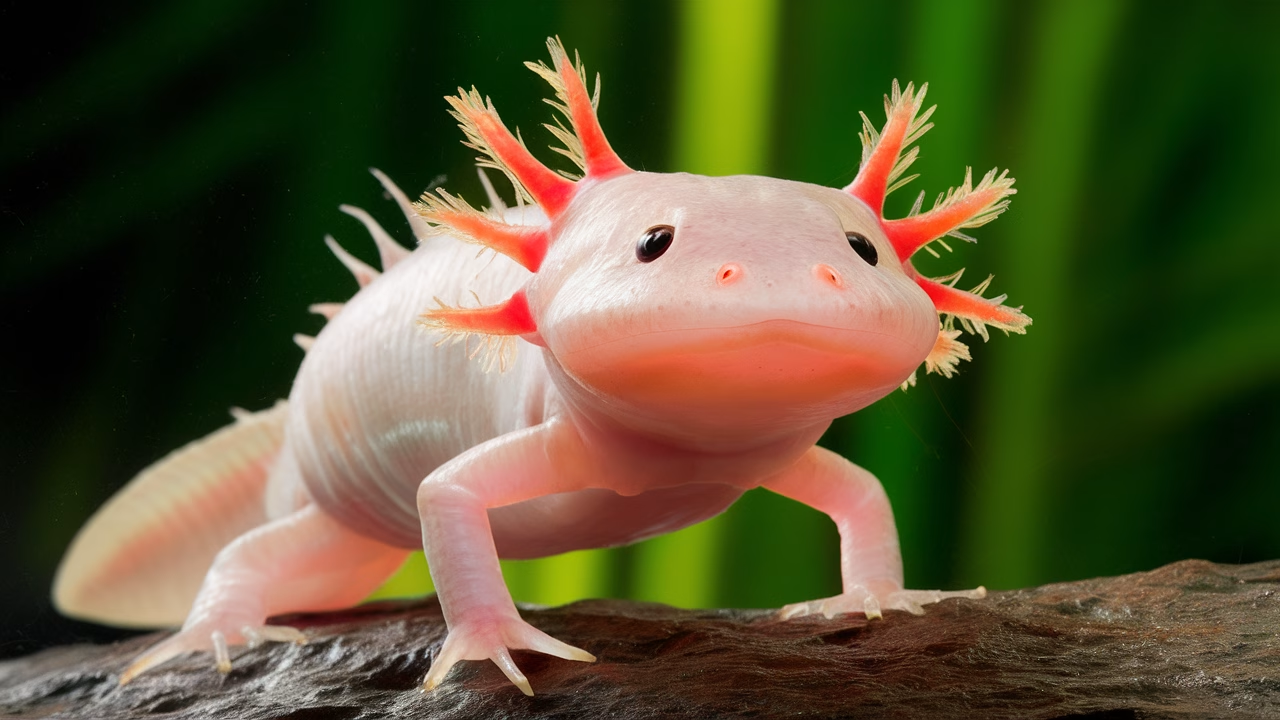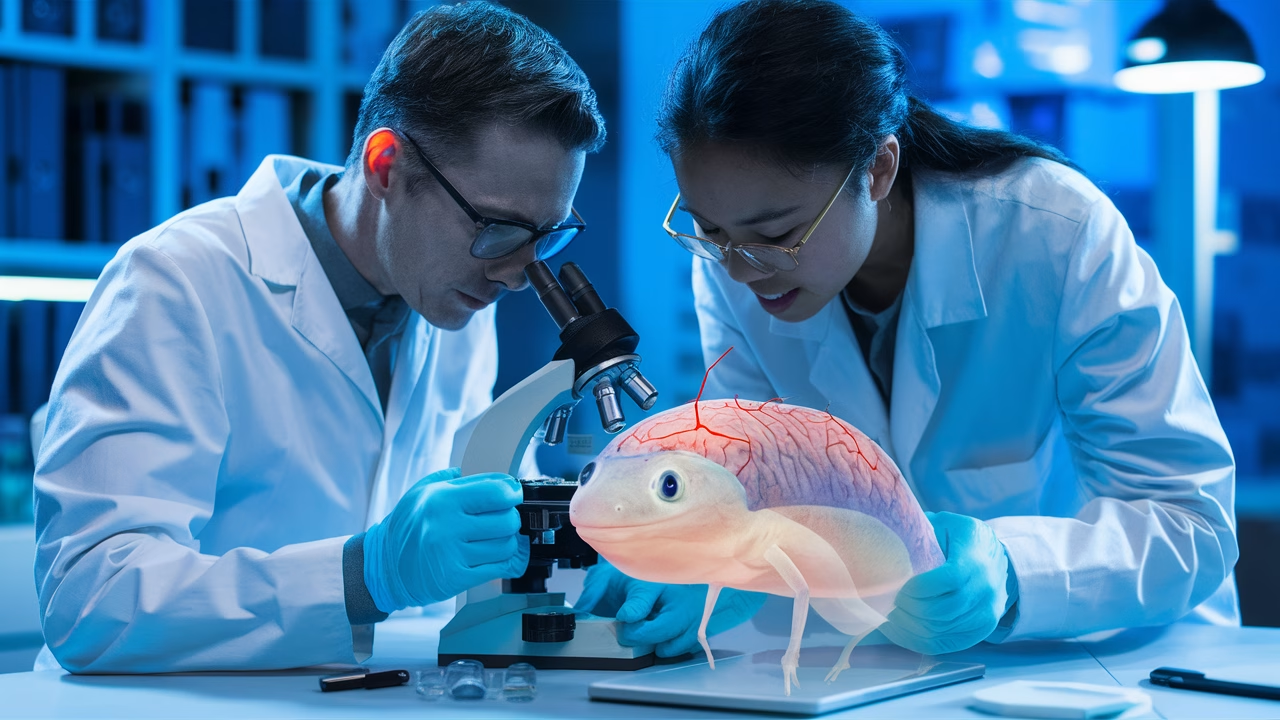Can Axolotls Really Regrow Their Spinal Cords and Brains?
Yes—axolotl regeneration includes not just limbs but also complex neural structures like spinal cords and even parts of their brain. This jaw-dropping capability has intrigued neuroscientists and biologists for decades, offering potential keys to unlocking advanced brain injury recovery methods in humans.
TL;DR: How Do Axolotls Regenerate Nervous Tissue?
- Axolotls regenerate spinal cords seamlessly: They repair spinal damage with functional synapses forming within weeks.
- Neurons regrow with precision: Axolotl neuron regeneration rebuilds neural circuits—including myelination and synaptic reconnection.
- Brain injury recovery is functional: Not only structurally regrown, but the tissue becomes behaviorally and neurologically active again.
- Real-life medical promise: Insights from axolotl regeneration could lead to therapies for paraplegia, stroke, and neurodegenerative diseases.
- Current research is diving deep: Scientists are unraveling the biochemical cues behind this phenomenon to inspire human cell therapies.
The Fascinating World of Axolotl Regeneration
Meet the axolotl—a charming creature cloaked in pink gills and wide-eyed wonder. But behind its whimsical façade lies one of the most advanced regenerative systems in the animal kingdom. Native to the lake complex of Xochimilco, near Mexico City, this amphibian is now taking center stage in neuroscience labs globally.
So why is axolotl regeneration such a focus? Unlike humans, axolotls can regrow tissues without forming scars. But even more spectacularly, they regenerate parts of their central nervous system through spinal cord regeneration and neuron regeneration processes that could revolutionize medicine for spinal and brain injuries.
Understanding Spinal Cord Regeneration
Unlike mammals, axolotls possess a virtually scar-free healing process for the spinal cord. Following a complete transection, spinal cord regeneration begins as axolotls bridge the injury site with a bloom of stem-like cells known as ependymoglial cells. These rapidly divide and migrate, forming a conduit through which new neurons and glial cells traverse.
The beauty of the axolotl spinal cord regeneration process lies in what follows: axons sprout across the injury with guided precision, functional synapses restart, and within weeks, motor control and sensation often return. It’s neuroregeneration on a schedule—highly organized and astonishingly successful.
Let’s break it down further:
| Regeneration Phase | Event |
|---|---|
| Initiation (0-2 days) | Wound closes without scarring; inflammation tightly regulated |
| Proliferation (2-5 days) | Stem-like neural cells divide and begin re-pathway formation |
| Connection (1–2 weeks) | Axon guidance and functional synapses form |
What sets axolotl regeneration apart isn’t just their ability to rebuild; it’s their ability to rebuild correctly—with circuits that work. In humans, even with stem cells, we battle misconnection and scar tissue. Axolotl regeneration offers a blueprint that might someday help spinal cord injury patients walk again.
Neuron Regeneration in Axolotls
Axolotl neuron regeneration doesn’t occur in isolation—it requires a symphony of molecular events. One of the keys is controlling the immune response. Axolotls produce cells like microglia in a way that supports, rather than inhibits, regeneration.
The central players in neuron regeneration include:
- Efferent neurons: guiding redevelopment of motor function
- Inhibitory interneurons: balancing reflexes and signal feedback
- Glial cells: restructuring myelin sheaths and environments that support axon growth
These rebuild not only the axon but the supportive environment around it, promoting functional synapses—connections that “speak the right language” post-injury. The magic of axolotl neuron regeneration lies in how axolotls use developmental pathways, such as Notch signaling and Shh (Sonic hedgehog), almost like rewinding a biological tape. They return to a youthful, growth-ready state and kickstart development anew.
Applications in Brain Injury Recovery
The notion that adult brains can regrow is often met with skepticism. But here’s where axolotl regeneration changes the game. They’ve been shown to regenerate entire segments of their telencephalon—akin to regenerating parts of the human cerebral cortex.
Why is this valuable? Because many brain injuries in humans—like stroke or traumatic impacts—occur in cortex-rich areas. By studying the benefits of studying axolotl brain injury recovery, researchers are closer to unlocking how to ‘reboot’ our own brains’ regenerative abilities.
Studying Axolotls for Potential Treatments
Let’s pull open the lab door. In recent studies, researchers have ablated parts of axolotl brains—like the olfactory bulbs or sections of the forebrain. Weeks later, not only do these structures regrow through axolotl regeneration, but so do their functions. Behaviorally, the animals react to the right cues, and neurologically, their EEG patterns stabilize. In short—they heal, and they function.
One study tracked behavior before and after targeted brain lesions. Post-recovery, axolotls navigated mazes as efficiently as controls. This suggests complete re-networking—a huge deal for designing brain injury recovery regimes in humans.
In comparison to mammalian brains, which become hostile to regeneration as we age, axolotl regeneration maintains a cradle of plasticity. This is like having a construction crew on standby—always ready to rebuild the neural city.
Future Implications in Medicine
So what does this mean for us? If we crack the code of how axolotl regeneration regulates genes post-injury, we could teach human cells to behave in similar regenerative ways. Already, scientists are experimenting with applying axolotl-derived genetic stimulants in mouse models.
The applications of axolotl neuron regeneration in medicine could be stunning: think reversing paralysis through spinal cord regeneration, healing traumatic brain injuries with neuron regeneration pathways, or even tackling degenerative diseases like Parkinson’s without implants or ongoing drug regimens. Instead of patching the damage, we might rebuild using functional synapses.
| Medical Condition | Axolotl Insight | Future Human Technique |
|---|---|---|
| Spinal cord injury | Functional spinal cord regeneration of motor pathways | Stem-cell mediated cord bridging |
| Stroke | Rewiring lost cortex regions | Genetic reprogramming to induce neuron growth |
| Multiple sclerosis | Regenerates myelinated axons | Myelin sheath regeneration via cues from glial cells |
Of course, reprogramming a human adult’s nervous system isn’t without caveats—immune responses, ethical boundaries, and genomic differences make for complex challenges. But axolotl regeneration is now teaching us that the map isn’t lost—perhaps just out of reach.
Final Thoughts
Axolotl regeneration is both mesmerizing and medically promising. What was once thought mythological—lobes of brain returning through brain injury recovery, nerves reconnecting via neuron regeneration, function reviving through spinal cord regeneration—is real, observable, and repeatable in this one amphibian. By studying and mimicking their miraculous recovery processes, we edge closer to solving some of the greatest puzzles in modern medicine.
If you’re a student, researcher, or simply someone enthralled by nature’s ingenuity, axolotl regeneration offers a masterclass in biological resilience. Perhaps the day will come when your work contributes to a therapy that lets a human walk again after paralysis—or recover sight, speech, or sensation through functional synapses. And when it happens, thank the axolotl.
FAQs About Axolotl Regeneration
- How fast can axolotls regenerate spinal cord injuries?
Complete functional recovery can occur in as little as 2–3 weeks depending on injury size and location. - Can axolotl regeneration mechanisms be used in humans?
Not directly, but scientists are isolating key pathways for translational therapy. - Do axolotls feel pain during regeneration?
There’s limited evidence to suggest they experience chronic pain; their healing seems regulated to minimize trauma. - Is their brain regeneration perfect?
Functionally close—axolotls show normal behavior post-recovery, though precise synaptic mapping is still under study. - Can other animals regenerate like axolotls?
Some, like zebrafish and salamanders, partially can—but axolotls remain unmatched in CNS regeneration. - Why don’t humans regenerate the same way?
Scar formation, immune responses, and gene expression shifts prevent us from achieving similar results. - Are axolotls endangered?
In the wild, yes—but captive populations are sustained in research and breeding facilities.





